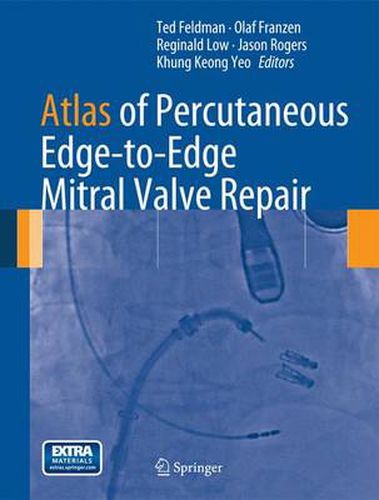Readings Newsletter
Become a Readings Member to make your shopping experience even easier.
Sign in or sign up for free!
You’re not far away from qualifying for FREE standard shipping within Australia
You’ve qualified for FREE standard shipping within Australia
The cart is loading…






The field of structural heart disease interventions is experiencing a stage of rapid growth with the development of percutaneous mitral valve repair therapies and percutaneous aortic valve replacement therapies. The MitraClip represents a new therapeutic frontier for mitral regurgitation and is expected to revolutionize repair of the mitral valve. For the first time in the world, physicians now have the capability to repair the mitral valve percutaneously without the need for a sternotomy or cardiopulmonary bypass. However, as with all new endeavors, there is a steep learning curve, not just for the individual operator but also for the entire field. The MitraClip technology and technique is technically complex and is guided by echocardiography and fluoroscopy. It is an imaging intensive procedure that requires deep 3-dimensional understanding of normal and abnormal cardiac anatomy. Not all mitral regurgitation cases are suitable and not all cases are straightforward. It is therefore crucially important for physicians in this specialty to communicate their experience, successes, failures and complications with each other.
Written by the leaders in this breakthrough field, the Atlas of Percutaneous Edge-to-Edge Mitral Valve Repair is the first of its kind for the new percutaneous MitraClip procedure. The Editors have designed the book to be a comprehensive reference manual and to provide cardiologists with true examples of basic and complex cases of percutaneous mitral valve repair using the technology. In addition, this book provides step-by-step guides to the procedure and complications as well as steps to recover from them are discussed. The Atlas is anticipated to be a very valuable reference for both novice and experienced interventional cardiologists and echocardiologists. As percutaneous valve repair becomes more common it will also be of great interest to general cardiologists and surgeons.
$9.00 standard shipping within Australia
FREE standard shipping within Australia for orders over $100.00
Express & International shipping calculated at checkout
The field of structural heart disease interventions is experiencing a stage of rapid growth with the development of percutaneous mitral valve repair therapies and percutaneous aortic valve replacement therapies. The MitraClip represents a new therapeutic frontier for mitral regurgitation and is expected to revolutionize repair of the mitral valve. For the first time in the world, physicians now have the capability to repair the mitral valve percutaneously without the need for a sternotomy or cardiopulmonary bypass. However, as with all new endeavors, there is a steep learning curve, not just for the individual operator but also for the entire field. The MitraClip technology and technique is technically complex and is guided by echocardiography and fluoroscopy. It is an imaging intensive procedure that requires deep 3-dimensional understanding of normal and abnormal cardiac anatomy. Not all mitral regurgitation cases are suitable and not all cases are straightforward. It is therefore crucially important for physicians in this specialty to communicate their experience, successes, failures and complications with each other.
Written by the leaders in this breakthrough field, the Atlas of Percutaneous Edge-to-Edge Mitral Valve Repair is the first of its kind for the new percutaneous MitraClip procedure. The Editors have designed the book to be a comprehensive reference manual and to provide cardiologists with true examples of basic and complex cases of percutaneous mitral valve repair using the technology. In addition, this book provides step-by-step guides to the procedure and complications as well as steps to recover from them are discussed. The Atlas is anticipated to be a very valuable reference for both novice and experienced interventional cardiologists and echocardiologists. As percutaneous valve repair becomes more common it will also be of great interest to general cardiologists and surgeons.